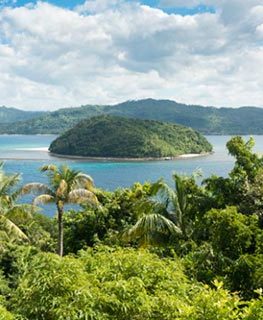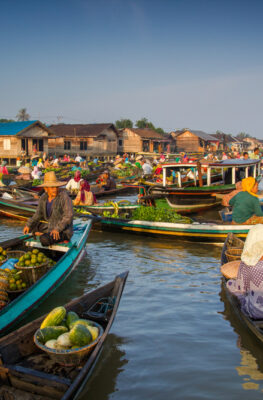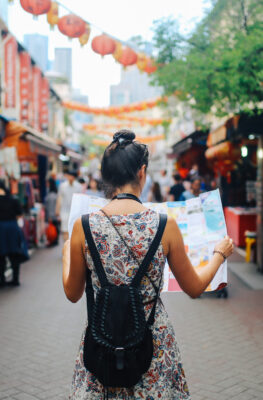Published on September 6, 2019
Welcome to Culture and Heritage in ASEAN, a series where we highlight the rich, varied culture and heritage that Southeast Asia has to offer. This incredible region of the world has delectable food, intricate architecture, fun festivals, and fascinating interwoven histories waiting for you to discover. We’re here to help you identify some of the experiences, tastes, and sights that will make your next vacation truly unforgettable.
We’re diving right into the enriching cultural experiences of Indonesia and Laos. You will learn more about the Barong Dance that demonstrates the never-ending battle of good and evil in Indonesia; and Luang Prabang, Laos, where Buddhist, colonial, and Chinese architecture are all found side-by-side in one impressively preserved town! Across ASEAN nations, and particularly in Indonesia and Laos, you’ll find culture and heritage that is truly multicultural in its origins.
Indonesia
Indonesia is famed all around the world for its breathtaking beaches and natural wonders. With around 6,000 inhabited islands, it’s easy to find a rich and diverse history, heritage, and cultures across this island nation. With nine UNESCO World Heritage Sites, and influences coming from China, the Middle East, and colonial Europe, the wealth of experiences offered here could take a lifetime to explore.
Prambanan Temple Compounds UNESCO World Heritage Site
Are you a history buff with a fascination for elaborate ancient temples created centuries before modern technology? Then the Prambanan Temple Compounds on the island of Java are a must-see for you! Not only will the sheer size and intricacies of the temples and statues enthrall you, but so will their profound cultural significance and history.
These compounds date from the 8th century AD during the peak of Sailendra’s dynasty in Java, located on the border of Yogyakarta and Central Java. This complex also represents the most massive Hindu compound dedicated to Shiva in all of Indonesia, as well as the country’s largest Buddhist complex, thus uniquely representing past religious peaceful cohabitation. We recommend you try to time your visit to see night-time Ramayana Ballet performance at the nearby Ramayana theatre. After sunset, you’ll be able to admire this beautiful complex and a nationally-renowned performance to understand what this religious monument represents

The Barong and Kris Dance: Good vs. Evil
Speaking of dancing and stories, why not take a look into Balinese mythology and observe a remarkable performance of Barong Dance? This dance is native to the island of Bali, finding its origins in Hinduism and telling the story of the eternal battle between Barong, a guardian angel that takes the form of a lion, and Rangda, the Queen of demons. It is an elaborate, synchronized performance with traditional costumes embellished with decadent gold and mirrors. These performances can be seen throughout the island; however, the most popular performed by the Batu Bulan villagers in the Gianyar district or Denpasar.
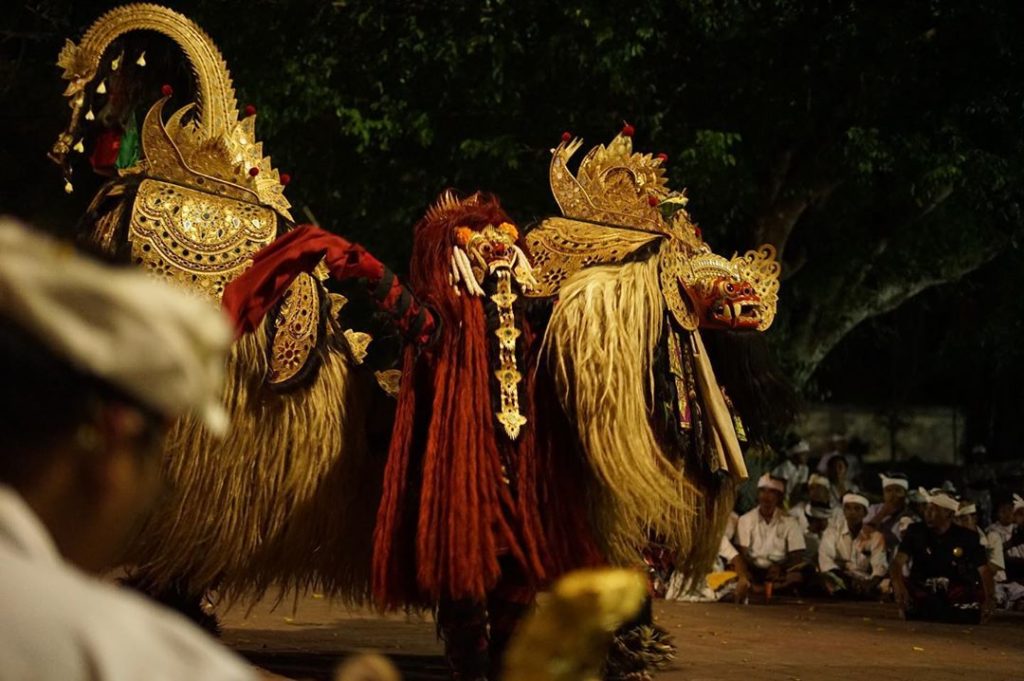
Shopping for Batik and Lurik in Solo
If you like to commemorate your travels with beautiful items, why not practice your bartering skills at Pasar Klewer in Solo? Batik and Lurik are traditional cloths produced with wax and dye in Solo and Yogyakarta, Java that is used to represent Indonesian culture all the world over. Believed to be created outside palace walls around the end of the Majapahit Empire along with the spread of Islam throughout Indonesia, Batik and Lurik have captured attention globally due to their intricate designs. Traditionally blue, brown, and white to represent earth, fire, air, and water, these cloths are still famed for their beauty to this day and represent the sharing of Indonesian culture and heritage to visitors worldwide. Not only this, but the experience of shopping and bartering for them is one you cannot miss during your time in Indonesia.

Now that we’ve taken a look at a few vibrant cultural and heritage experiences in Indonesia, let’s go further inland to the cultural melting pot of Laos.
Laos
If you’re looking for a colorful country with roots and heritage from a vast array of sources, then look no further than Laos. As a landlocked ASEAN country, Laos is a real melting pot of cultures that welcomes you to delve into its captivating history. With well-preserved French colonial architecture interwoven with traditional Laotian buildings villages, time stands still in this multicultural country.
Luang Namtha
If you travel north near the borders of Myanmar and China, you will find the multicultural epicenter of Luang Namtha. Home to around 20 different ethnic groups, you can fully immerse yourself in traditional Laos culture by visiting nearby villages and even taking part in a homestay.
Luang Namtha has a lot to offer, whether you want to kayak down rapids, explore ancient ruins hidden in nature, or experience a traditional ceremony or cooking class. You can do it all in Luang Namtha’s beautifully remote villages! The Tai Dam village is known for its beautiful silk production. Ban Sop Tud’s Lanten people can show you their river lifestyle and unique output of bamboo paper. While Ban Sop Sim, a Khmu village, is famous for its woven rattan, bamboo baskets, tools, and Lao hai rice wine. These are just some of the many heritage villages you can visit while in Laos.
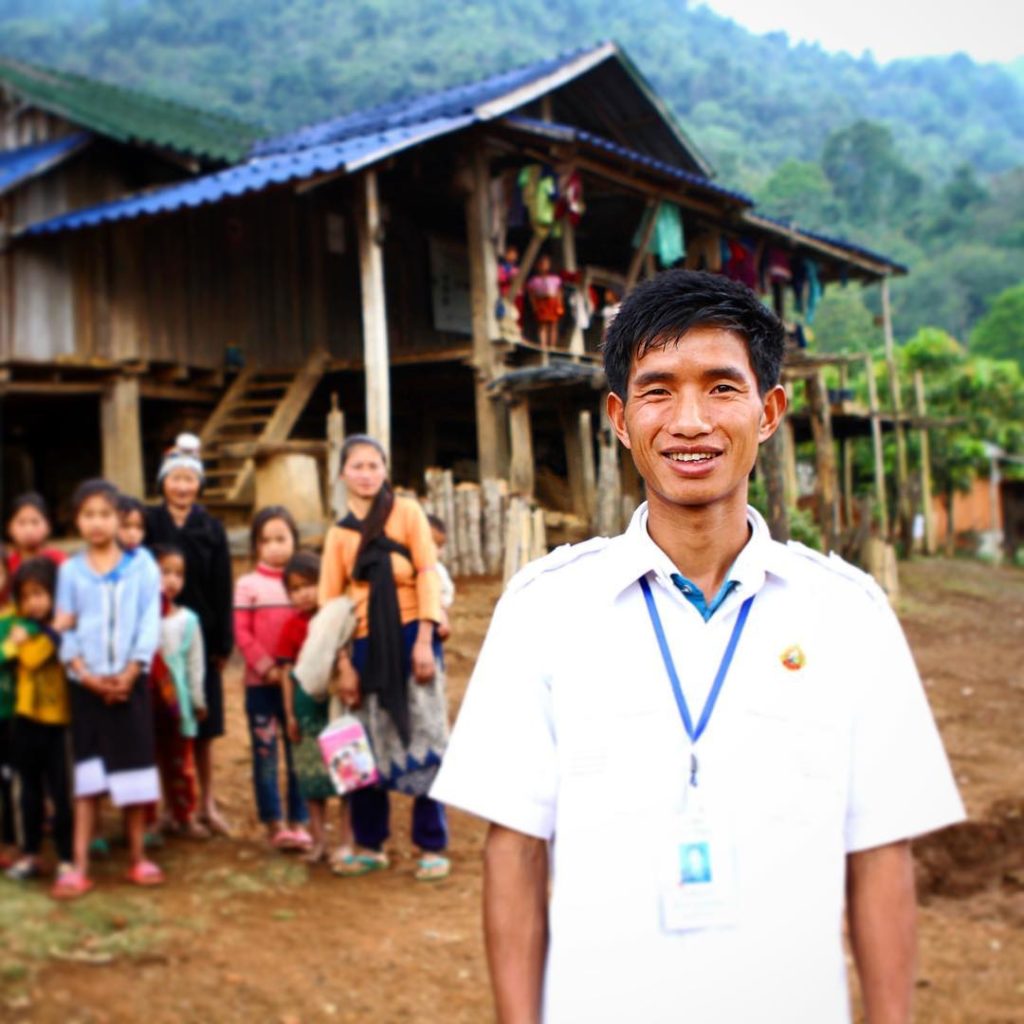
Architecture in Luang Prabang
For those of you interested in Laos’ complex history of influences coming from surrounding countries and French colonialism, Luang Prabang should be high on your list. With strict rules designed to preserve the construction of traditional Laotian homes, the architecture of Laos proves engrossing. With dictations as to the placement location of bed frames and the angles of entryways to new rooms, Luang Prabang works hard to protect local heritage. We recommend you learn more about this in person by exploring the architecture of Luang Prabang for yourself. Here you’ll find not only a wealth of information on traditional Laotian design but also the history explaining the differences and evolution of Laos’ modern culture. You can even stumble into ancient Buddhist temples, as well as well-preserved historical buildings with Burmese, Chinese, and French-colonial influences, all creating the unique cultural juxtaposition known only to Laos.

Laos Street Food
Follow your tastebuds on a flavorful journey through Laos! As we all know, food is one of the best ways to get to know a culture and spark conversations with locals. After all, taste and smell are inextricably linked to memory, so you have the perfect excuse to fill your stomach with the pleasant memories available across the nation.
From spicy, aromatic Laab, a minced meat salad, to the delicious yet straightforward Khao Piak Sen, a regional noodle soup, you are bound to discover many culinary masterpieces in Laos. We recommend after a day of exploring the stunning capital of Vientiane; you head down the Ban Anou Night Market to choose from the hundreds of mouth-watering dishes.

Now that you know the vast array of cultural opportunities available in Indonesia and Laos, we hope you feel inspired to get to see the heritage of these two stunning ASEAN countries! Will you eat your way through these spectacular countries? Or will you become an adventurer, exploring temples and staying in local villages? No matter what kind of traveler you are, you’re sure to have an unforgettable experience. Come back next time for our recommendations and insights into the culture and heritage of both Malaysia and Myanmar.



